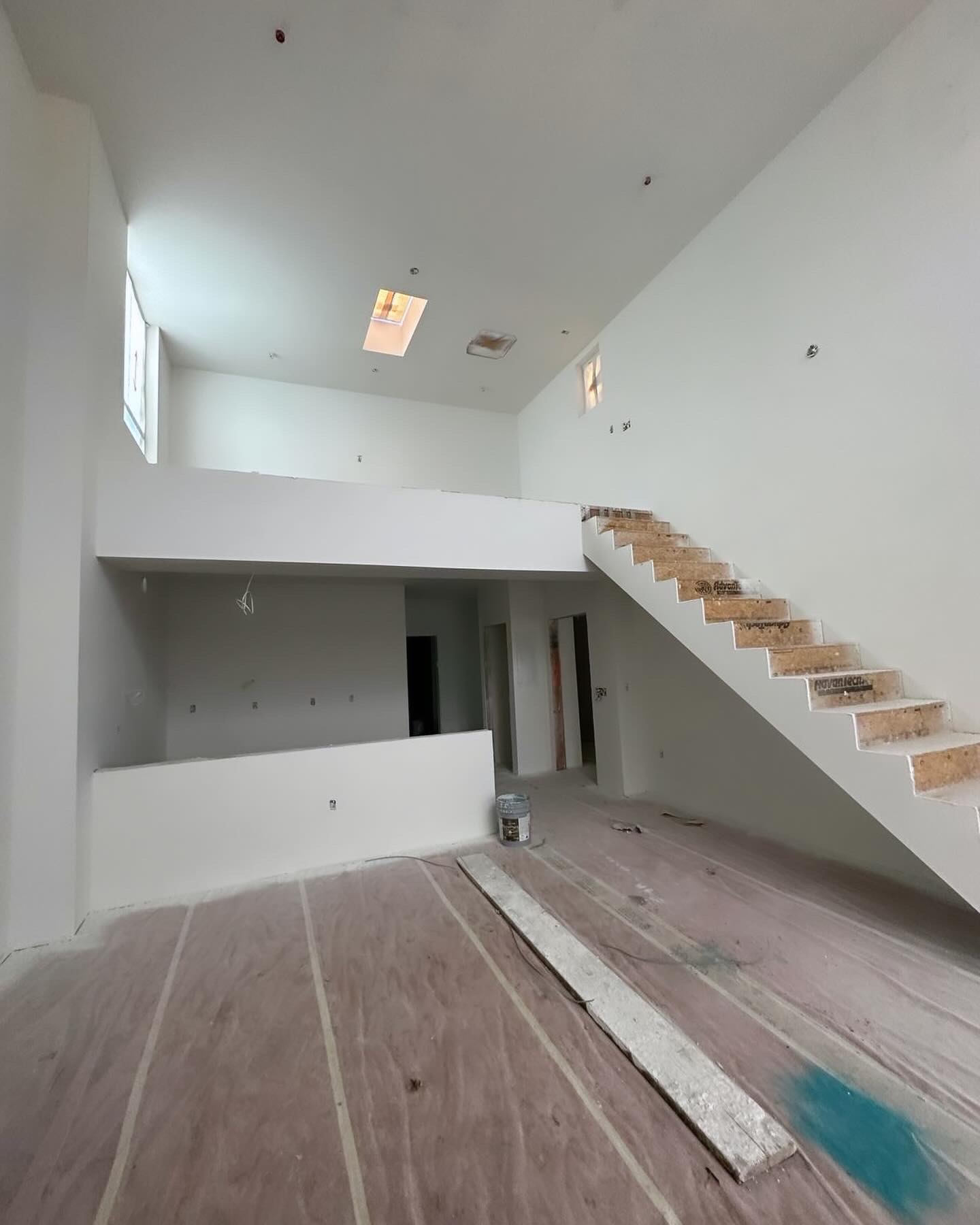Effective Drywall Repair Techniques to Recover Your Wall surfaces
Effective Drywall Repair Techniques to Recover Your Wall surfaces
Blog Article
Drywall Installment Facilitated: Tips for Perfect Results
Drywall installation is often perceived as a difficult job, yet with the ideal technique and expertise, it can become a workable venture. Understanding techniques for reducing, hanging, and finishing drywall can considerably affect the result.
Picking the Right Products
Picking the proper materials for drywall installment is essential to achieving a durable and aesthetically pleasing coating. drywall installation. The key element, drywall sheets, usually come in numerous densities, with 1/2-inch sheets being conventional for interior walls. For areas needing added moisture resistance, such as kitchens or washrooms, think about using environment-friendly board or concrete board, which are specially developed to hold up against moisture

Furthermore, picking the best fasteners-- either nails or screws-- is necessary for protecting the drywall to the framing. Drywall screws are generally preferred for their holding power and reduced danger of popping. Lastly, consider the finishing touches such as guide and paint, which not only boost the appearance yet likewise shield the drywall from dampness and wear.
Preparing the Installment Area
Before beginning the drywall installation process, it is necessary to prepare the setup location completely. This prep work involves a number of critical actions to make certain a smooth and effective job. Initially, clear the location of any furniture, appliances, or obstructions that could hinder gain access to. A tidy work area reduces the threat of damages to existing things and enables effective motion throughout installment.
Following, check the walls and ceiling for any blemishes, such as splits, openings, or mold. Address these problems beforehand; spot any type of problems and permit enough time for fixings to dry. Additionally, make certain that electrical outlets, buttons, and pipes are effectively placed and made up, as this will certainly impact drywall placement.
Take into consideration the ecological problems as well. A steady temperature and moisture degree are important for optimum bond and efficiency of the drywall products. If needed, utilize a dehumidifier or heating unit to produce suitable conditions.
Trimming and Hanging Drywall
The key to reliable drywall installment depends on the exact cutting and hanging of the panels. Begin by determining the space accurately, taking right into account any type of blockages such as electric outlets or windows. Utilize a straight side and an utility blade to score the drywall along your measurements, after that break it along the racked up line for a clean break. For more complex cuts, such as around outlets, a drywall saw can be made use of for precision.

Always work from the top down and delegated right, making sure that you keep a staggered pattern to enhance security. Properly hanging other the drywall sets the structure for a smooth finish, inevitably bring about superior lead to your drywall task.
Taping and Mudding Strategies
While correct cutting and dangling of drywall establishes the stage, the following essential action involves understanding taping and mudding methods to make sure a seamless coating. Insulation is necessary for reinforcing joints and avoiding splits; it entails installing tape right into the applied joint substance (mud) Begin with a quality fiberglass or paper tape, applying the tape over the joint and pushing it right into the wet mud using a taping blade, ensuring no air bubbles remain.
As soon as the tape is in area, use a slim layer of joint substance over the tape, feathering the edges to create a smooth change to the drywall surface. Permit this layer to dry click here for info completely prior to sanding it gently to remove flaws. Repeat this process, applying added coats of mud as essential-- usually a couple of coats-- while slowly broadening the application location with each layer to attain a smooth look.
After the last layer dries, sand the surface area with a fine-grit sandpaper until smooth. drywall repair. Remember to use a mask throughout sanding to avoid breathing in dirt fragments. Understanding these taping and mudding techniques is vital for achieving a professional-quality finish in your drywall installation
Finishing Touches for Perfection
Accomplishing a perfect drywall installment exceeds mudding and taping; it finishes in the ending up touches that elevate the total appearance. These final steps are critical in ensuring a professional-grade finish that go right here boosts the looks of your room.
Begin by fining sand the dried joint compound to create a smooth surface. drywall installation. After sanding, wipe down the walls with a moist cloth to eliminate any dirt fragments, ensuring a tidy surface for paint.
Next, use a guide particularly created for drywall. This action is vital, as it aids seal the joint substance and gives an uniform base for the topcoat. When the primer dries, evaluate for any type of imperfections, and retouch as needed.
Conclusion
In verdict, successful drywall installation pivots on the mindful choice of products, comprehensive prep work of the setup location, and precise implementation of reducing and hanging methods. Mastery of taping and mudding processes is essential for accomplishing a smooth finish.
Drywall setup is usually perceived as a difficult task, yet with the right method and knowledge, it can come to be a convenient venture.Picking the appropriate products for drywall setup is crucial to achieving a resilient and aesthetically pleasing surface.Prior to beginning the drywall installation process, it is necessary to prepare the installation area thoroughly. Understanding these taping and mudding methods is important for accomplishing a professional-quality finish in your drywall installation.
In final thought, successful drywall installation pivots on the mindful option of products, detailed prep work of the installation location, and precise execution of cutting and hanging strategies.
Report this page